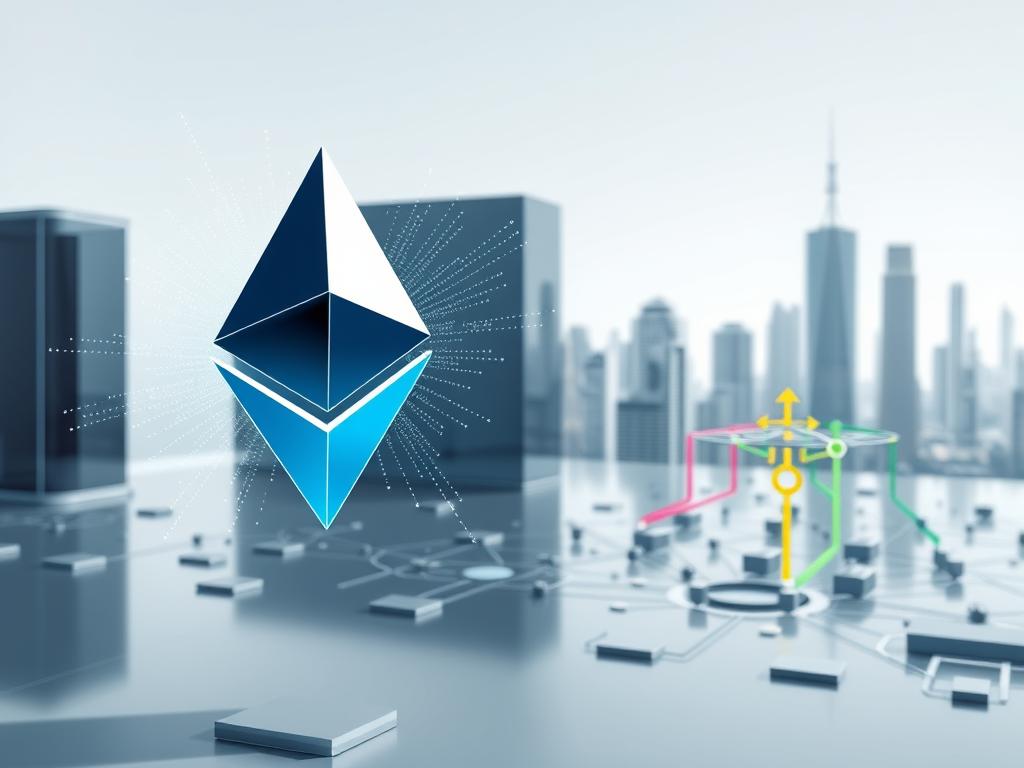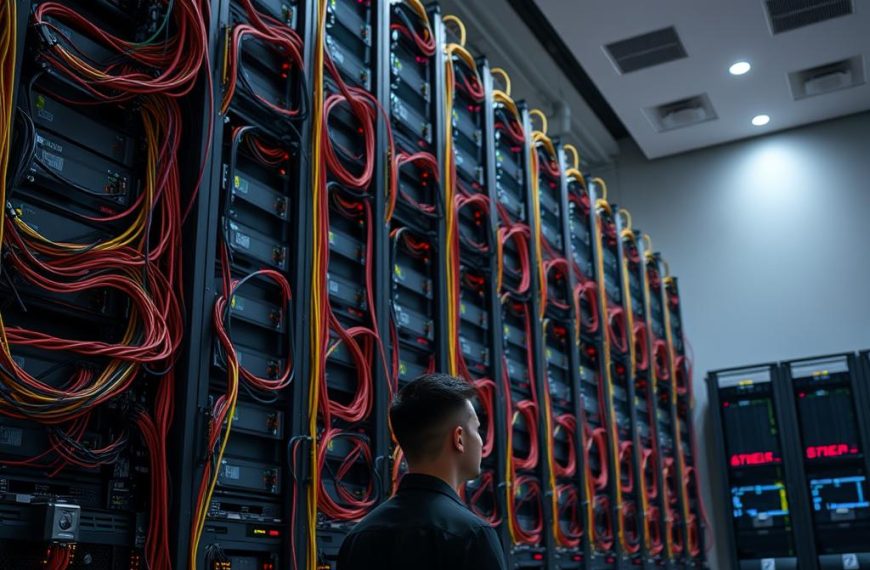Gas fees are vital for cryptocurrency transactions. They fuel blockchain networks and process transactions. These small payments are crucial for platforms like Ethereum’s blockchain network.
Gas cryptocurrency is the lifeblood of digital financial ecosystems. It compensates validators for their computational resources. This maintains network security and operational efficiency.
Crypto transaction costs vary widely. Simple Ether transfers incur minimal fees. However, creating NFTs or executing complex smart contracts can significantly increase costs.
Ethereum, the second-largest cryptocurrency, is innovating fee management. It’s moving from proof-of-work to proof-of-stake. This shift aims to reduce gas fees and boost network performance.
Grasping these mechanisms is crucial for crypto enthusiasts. As blockchain technologies evolve, so will strategies for managing network costs.
What is Gas Cryptocurrency
Gas powers blockchain network operations, especially in the Ethereum ecosystem. It measures and prices the computational effort for transactions and smart contracts. Gas is crucial for efficient network resource use.
Ethereum gas acts as fuel for blockchain interactions. It prevents wasteful or malicious computational consumption. Gas is a unique concept that ensures smooth network operations.
The Fundamental Concept of Gas
Gas serves as a computational measurement system. Each blockchain operation uses a specific amount of gas. This usage directly affects transaction costs.
- Simple ETH transfers require minimal computational power
- Complex smart contract executions demand higher gas amounts
- Network congestion dramatically influences gas prices
How Gas Powers Blockchain Networks
Gas creates an economic incentive for network participants. Miners get paid for processing transactions. Users pay fees based on computational complexity.
Ethereum gas fees can change dramatically. During busy times, like the 2020 DeFi summer, transaction costs soared. This shows how network operations can vary.
The Role of Gas in Transaction Processing
Gas keeps the network secure by making spam and unnecessary computations costly. Users can set maximum gas limits in wallets like MetaMask. This helps control potential expenses.
Gas is the economic heartbeat of blockchain networks, balancing computational resources with financial incentives.
Layer 2 solutions offer promising ways to reduce transaction costs. Polygon and Arbitrum are examples that maintain network efficiency. These alternatives help make blockchain transactions more affordable.
The Importance of Gas Fees in Blockchain Operations
Gas fees are vital for blockchain efficiency and network stability. These financial incentives power cryptocurrency transactions. They provide computational resources for verifying and executing blockchain operations.
Gas fees do more than cover transaction costs. They maintain the integrity of blockchain networks. They also ensure optimal performance across the system.
- Prevent network spam and unnecessary computational load
- Compensate miners and validators for their computational resources
- Create economic barriers against malicious network attacks
- Prioritise transaction processing based on computational complexity
Network incentives balance user accessibility with system security. A simple Ethereum transfer needs 21,000 gas. Complex smart contracts might require millions of gas to execute.
| Blockchain | Average Gas Fee | Transaction Speed |
|---|---|---|
| Ethereum | High | Moderate |
| Binance Smart Chain | Low | Fast |
| Solana | Very Low | Very Fast |
Gas fees reveal the complex economics behind blockchain technologies. These fees are not merely transaction costs, but sophisticated tools that maintain network health, security, and efficiency.
Gas fees represent the invisible infrastructure that keeps decentralised networks running smoothly and securely.
How Gas Fees Are Calculated and Priced
Gas fees are vital for cryptocurrency transactions. They determine the cost and efficiency of blockchain interactions. Gas limit and gas price play crucial roles in transaction complexity.
Blockchain networks use a complex system to calculate transaction costs. Each transaction needs computational resources. These are measured and priced through gas units.
Base Fee Components
Gas fee calculation involves several key elements:
- Gas Limit: The maximum amount of computational work a user is willing to pay for
- Gas Price: The cost per unit of computational effort
- Total Transaction Fee: Calculated by multiplying gas limit and gas price
Priority Fee Structure
Ethereum’s pricing model uses a nuanced approach to prioritise transactions:
| Fee Type | Description | Typical Value |
|---|---|---|
| Base Fee | Standard network transaction cost | 100 gwei |
| Priority Fee | Additional tip for faster processing | Variable |
| Total Fee | Base Fee + Priority Fee | Dynamically calculated |
Gas Limit Considerations
Understanding gas limit is crucial for managing transaction costs. The default gas limit for standard Ethereum transactions is 21,000 units. Transaction complexity directly impacts the required gas limit.
More intricate operations demand higher computational resources. Mastering these principles helps users optimise their blockchain interactions. This minimises unnecessary expenses while ensuring efficient transaction processing.
Factors Influencing Gas Fee Fluctuations
Cryptocurrency transactions involve many factors that determine gas fees. Network congestion is a crucial element driving these price changes. This creates a complex landscape for blockchain users.
Key drivers of gas fee fluctuations include:
- Network Traffic Intensity
- Transaction Complexity
- Market Demand Pressures
- Blockchain Scalability Challenges
Blockchain networks face significant strain during peak usage. A simple Ethereum transfer costing $1-$5 during low traffic can escalate to $50 or more during high congestion. These price swings show how volatile transaction costs can be.
Market demand greatly affects gas fee dynamics. When cryptocurrency interest rises, transaction volumes increase. This directly impacts network congestion and blockchain scalability.
Users compete for limited block space, driving up gas prices. This creates a competitive environment for transactions.
Understanding these fluctuations empowers users to strategically time and optimize their blockchain interactions.
Transaction complexity also influences gas fees. Basic transfers need minimal computational resources. However, complex smart contract executions require substantial processing power, leading to higher gas costs.
Blockchain users can reduce fee volatility by:
- Monitoring network traffic
- Executing transactions during off-peak hours
- Utilizing layer-2 scaling solutions
- Implementing efficient smart contract designs
Smart Contracts and Their Impact on Gas Costs
Smart contracts are vital in decentralised finance. They change how financial interactions happen, especially in yield farming and liquidity pools. These digital agreements shape the complex DeFi landscape.
Smart contracts add complexity to transactions. This complexity affects gas fees directly. They need multiple checks, function runs, and data storage.
Exploring DeFi Transaction Costs
DeFi transaction costs vary based on contract complexity. Common costs include basic token transfers and yield farming interactions. Liquidity pool exchanges and complex algorithmic transactions also factor in.
- Basic token transfers
- Yield farming interactions
- Liquidity pool exchanges
- Complex algorithmic transactions
NFT Minting Expenses
Creating NFTs involves complex smart contract interactions. These use a lot of computational resources. Minting gas fees can vary greatly.
| NFT Minting Stage | Estimated Gas Cost |
|---|---|
| Standard NFT Creation | $50-$150 |
| Complex Collection Mint | $100-$300 |
| Generative Art Project | $200-$500 |
Complex Contract Execution Fees
Advanced smart contracts with multi-step interactions can lead to higher gas fees. These might include complex DeFi protocols needing extensive validation.
Investors and developers should carefully assess potential gas costs. This ensures their blockchain interactions remain economically viable.
Strategies for Optimising Gas Fees
Managing gas fees in cryptocurrency transactions requires smart strategies. Users can cut blockchain costs and boost efficiency with targeted approaches. These methods help navigate the complex world of crypto transactions.
Timing is key to reducing gas expenses. Network congestion affects fees directly. Savvy crypto users know when to make their moves.
- Identify low-traffic periods for conducting transactions
- Use gas price alerts to monitor optimal transaction windows
- Leverage layer-2 solutions for reduced fee structures
Layer-2 solutions like Optimism and Arbitrum offer significant cost savings. These platforms provide alternative routes that avoid main blockchain network congestion. They’re innovative ways to cut transaction costs.
| Strategy | Potential Savings |
|---|---|
| Transaction Batching | Up to 50% reduction |
| Layer-2 Solutions | 70-90% fee reduction |
| Off-Peak Timing | 20-40% cost savings |
Advanced users can further cut costs with gas price alerts. Monitoring real-time network conditions is crucial. Proactive management becomes the key to minimising blockchain transaction expenses.
Smart contract efficiency is not just about reducing costs—it’s about maximising blockchain potential.
Cryptocurrency transactions require strategic thinking. These optimisation techniques help users navigate the blockchain landscape effectively. They enable unprecedented financial precision in the crypto world.
Conclusion
Gas fees are crucial for cryptocurrency adoption. They’re not just costs, but vital mechanisms driving the digital economy. These fees reflect a complex interplay of resources, demand, and incentives on platforms like Ethereum.
Gas fees dynamically indicate network health as blockchain technology evolves. New solutions are emerging to reduce costs while maintaining security. The path to a more efficient blockchain ecosystem requires ongoing learning and adaptation.
These innovations are reshaping the digital economy. Understanding gas fees is key to sophisticated blockchain interactions. It helps users make informed decisions and minimise expenses.
Knowledge is power in this ever-changing landscape. Stay curious and embrace the complexity. By doing so, you’ll be at the forefront of the blockchain revolution.











